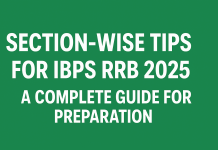Analyzing obstacles to successful communication can be more difficult than you think. Filtering, selective interpretation, knowledge overload, emotional disconnects, lack of source familiarity or legitimacy, office gossip, grammar, gender gaps, meaning differences between Sender and Receiver, and biased language are all examples of these. Let’s take a look at each of these roadblocks one by one. Barriers to communication is an important topic for all the exams and useful for the interview. Exams like SBI Clerk, RBI Grade B, SEBI Grade A, FCI AGM have included communication as a part of recruitment exams.
So, for a better understanding of communication and its barriers let’s begin.
What is Communication and Communication Barriers?
Sharing is what communication is all about. There is no communication if there is no sharing. We must consider the communication environment and the obstacles that prevent messages from being sent and received effectively in a team or with others, at work or in the community\.
Anything that prevents us from receiving and understanding the messages others use to communicate their knowledge, ideas, and thoughts is referred to as a communication barrier. Attitudinal Barriers, Behavioral Barriers, Cultural Barriers, Language Barriers, and Environmental Barriers are the five forms of barriers to successful communication.
People with different personalities, beliefs, and discrimination are a common cause of organizational communication breakdown. We may draw on a wider spectrum of perspectives, concepts, experiences, and understanding by valuing different people. Bias, generalizations, and stereotyping can all lead to communication barriers. Language barriers exist when people do not speak the same language or do not have the same degree of skill in a language. Empathy is crucial for overcoming cultural barriers to communication. Numerous environmental factors influence successful communication.
Types of Communication Barriers
Physical/Environmental Barriers
As the world becomes more globalised, every large office will have employees from all over the globe. Several fundamental values of society have different meanings in different cultures. From one culture to the next, clothing, religions (or lack thereof), food, drinks, pets, and general behaviour can differ dramatically. As a result, we must consider these various cultures when communicating. This is what we mean when we say that something is culturally acceptable.
Noise, in particular for verbal communication, is another obstacle. The flow of communication is disturbed by noise. The receiver does not receive oral signals from the communicator, which dilute the message. Although noise definitely affects oral communication, written communication can also have an impact to the degree. When someone who writes a letter or a report can lose his focus and hence his flow of thinking.
Environment determines the efficiency of communication. If a receiver is in a noisy location he is unlikely to detect the message that is being sent. If an encoder cannot clearly communicate information at a musical concert, he will not deliver his best to the audience. A barrier to communication can also be geographic distance.
Technological Barriers
Different channels, instruments and gadgets such as the telephone, the microphone, projection systems, printers, photocopiers, telexes, faxes, radios, film and digital data are being used to communicate, particularly the transmission of messages. All this is very helpful when it works smoothly. At the same time, when they struggle to perform their duties effectively, they serve as obstacles.
Consequently, communication does not hit the target audience. The delay in sending messages to the receivers will result in unexpected circumstances. Technology is widely used in today’s organisations for communications. The whole communication process could be ruined by a technological failure or even a minor technical failure.
Psychological Barriers
Information flow may be prevented by the psychological condition of the communicators. If the receiver has problems, they would probably be less careful, which may lead to bad communications. The sender and recipient’s emotional state affects how the message is received, interpreted, and delivered.
Whoever is not in a good mood would probably speak less or speak negatively. A worried mind is not pleasant to communicate with. For instance, if someone is upset, he/she might talk later about things they regret. An angry person can easily misunderstand the message, even when hearing someone else talk.
Other feelings, such as anxiety, nervousness, confusion, distrust and envy influence the process of communication. For instance, a person who has extreme happiness laughs at something he/she says. The same person cries or gets upset in minor circumstances when he is sad.
Premature evaluation
Some people are always in haste. Such people would probably make fast judgments and conclude. They do not take into account all aspects of knowledge, for example social, cultural, economic, etc., and often take quick, mistaken decisions.
Physiological Barriers
Physiological barriers to communication are linked to the human body and mind (memory, attention, and perception) weaknesses. The personal disorder, due to ill health, poor eyesight, or hearing difficulties, can lead to physiological barriers. Effective communication means the senses both in the sender and in the receiver work properly. Limiting people’s minds and bodies leads to the physiological barrier that interrupts the message from reaching the destination. For instance, a person with short-term memory cannot transmit the message after a while when he or she forgets the message, so communication fails.
Deafness and impairment of hearing
An audio message can not be received/sent by a receiver/sender with hearing disorders or hearing loss. The person also can’t talk easily with people. If he/she has a very serious hearing impairment, he/she may only hear words and cannot get the purpose out of the message.
Vision impairment and blindness
In communication, the use of eyes is as vital as other parts of the body, as message building occurs mainly through seeing. Sight loss, impaired vision, short sight, hypermetropia, blurred vision, a visual vision of the tunnel, etc. are some forms of visual disability.
Semantic Barriers
Semantic is the study of meanings, symbols and signs used in communication. Semantic communication barriers are symbolic obstacles, which in some way distort the sent message, making it harder to understand.
The significance of words, signs, and symbols can vary and the same word may have hundreds of meanings from person to person. If a sender sends a message to a recipient, a communication mechanism that causes misunderstandings between them may also be interpreted incorrectly.
Denotative barriers
The denotative sense is the direct meaning of every word which two people must share in order to understand. The obstacles arising from the sense or significance of a term differently used by sender and recipient are denotational communication barriers. They disagree about the meaning of a word since they do not know what the other person is trying to imply.
Connotative barriers
The implicit significance of a word is called connotative meaning. Connotative communication barrier refers to the disparity in meaning in various abstract situations, contexts, behaviors, and sensations. They both know the significance of the expression, but use one meaning according to the context, which might be used differently in another context.
Cultural Barriers
Globalization has constantly allowed cultural barriers to be surmounted. The relaxing and peaceful pace of the East, the formal and official British style, the informal and factual character of the Americans, Indian ethnicity, the detailed nature of Germans as well as French severe courtesy and politeness of speech are all cultural characteristics.
Cultural communication barriers are most often encountered when communication between two cultural backgrounds takes place. In daily life, we are facing cultural barriers. The entire world performs and participates on one forum in the era of globalisation and digital media. For the successful and fruitful communication method, mutual understanding between communicators is essential here.
Organisational Barriers
- The Organizational Barriers apply to the barriers to the circulation of knowledge between employees that could lead to a company’s commercial failure
- Rules and policies of the Organization: Organizations also have the rule about the letter, medium and mode of communication to use. Likewise, the organisational policy specifies the relationships between workers and how they interact, retaining their status within the organisation.
- Status and Hierarchical Position in the organisation: Workers in all organisations, based on their organisational ranks, are divided into various groups. The people in the upper echelons of the hierarchy are superior to those in the lower echelons, so communication between them is formal. Often, this structured communication can serve as an obstacle to successful communication.
- Complex structure of the organisation: If more management levels are present in the organisation, the communications would be affected. More stages delay contact and could alter until the intended recipient is reached.
Overcoming barriers to communication
- Language, message and tone: The sender should make sure the message is structured in plain language. The message’s tone does not hurt the recipient’s feelings. To the extent possible, the content using technical terms can be avoided by communicating concisely.
- Consult others before contact: Feedback should be invited by all concerned when preparing the communication. The main advantage would be to increase the success of the communication mechanism to all the people consulted at the time of planning of the communication process.
- Communicate on the recipient’s needs: The sender should coordinate the formation of the message not at his level but the perception or environment of the recipient should be kept in mind.
- Message consistency: the message sent to the recipient does not conflict with itself. It should be in line with the organization’s goals, programmes, strategies and techniques. When new data must be sent inlay of the old one, a declaration of modification should always be sent; otherwise, doubts and queries will arise.
- Follow-up Communications: Management should also attempt to identify the faults of the communication system in order to make communication effective. In these circumstances, it is possible to make an attempt to know if the formal or informal contact is more complicated
- Ensure that correct feedback is provided: the reason for this feedback is to see if the recipient has grasped the value of the obtained information properly. The recipient’s answer can be interpreted in face-to-face contact. However, the sender should follow some right feedback mechanism in the case of written communications or other means of communication.
- Use of simple language: use of direct, straightforward words is essential. It is important to avoid using ambiguous terms and jargons.
- Noise reduction and elimination: Noise is the main barrier to contact that needs to be prioritised. The source of noise should be identified and then removed.
- Listening Active: Listen carefully and with care. “Listening” and “hearing” vary from each other Listening actively involves interpreting the meaning that is heard with good comprehension. The speaker will make sure that his/her message is interpreted by the recipient in the same terms as the speaker wishes by asking questions.
- Avoid overload of information: Managers should know how to make their job a priority. The job shouldn’t overload itself. They should spend good time with their subordinates and listen actively to their complaints and suggestions.
- Give Constructive Feedback: Avoid negative feedback. The quality of the feedback may be negative, but should be constructively conveyed. Building feedback can contribute to better contact between the higher and the lower authorities.
- Proper selection of media: Managers must pick the communication medium correctly. Simple messages, including face to face contact or meetings, should be transmitted orally.
Conclusion
Communication is important, which helps in people’s relationships work well. Therefore the significance of communication is important and should not be overlooked. Poor communication leads to poor decision-making and poor business in general. Therefore, good communicators must be mindful of obstacles and strive to eliminate them so that messages are delivered clearly and concisely. Go on and be a good communicator now!
Also Read:
LIFE OF AN RBI GRADE B OFFICER!
Importance of May 1, 2021: Labour day; Maharashtra Day, and Gujarat Day
Important days in April 2021: National and International
Get Free Online Test Series, GK updates in form of Beepedia, as well as latest updates for Bank PO, Bank Clerk, SSC, RBI, NABARD, and Other Government Jobs.









![List of Latest Appointments in January 2020 [Updated]](https://www.ixambee.com/blog/wp-content/uploads/2020/02/Add-a-heading-2-100x70.png)





